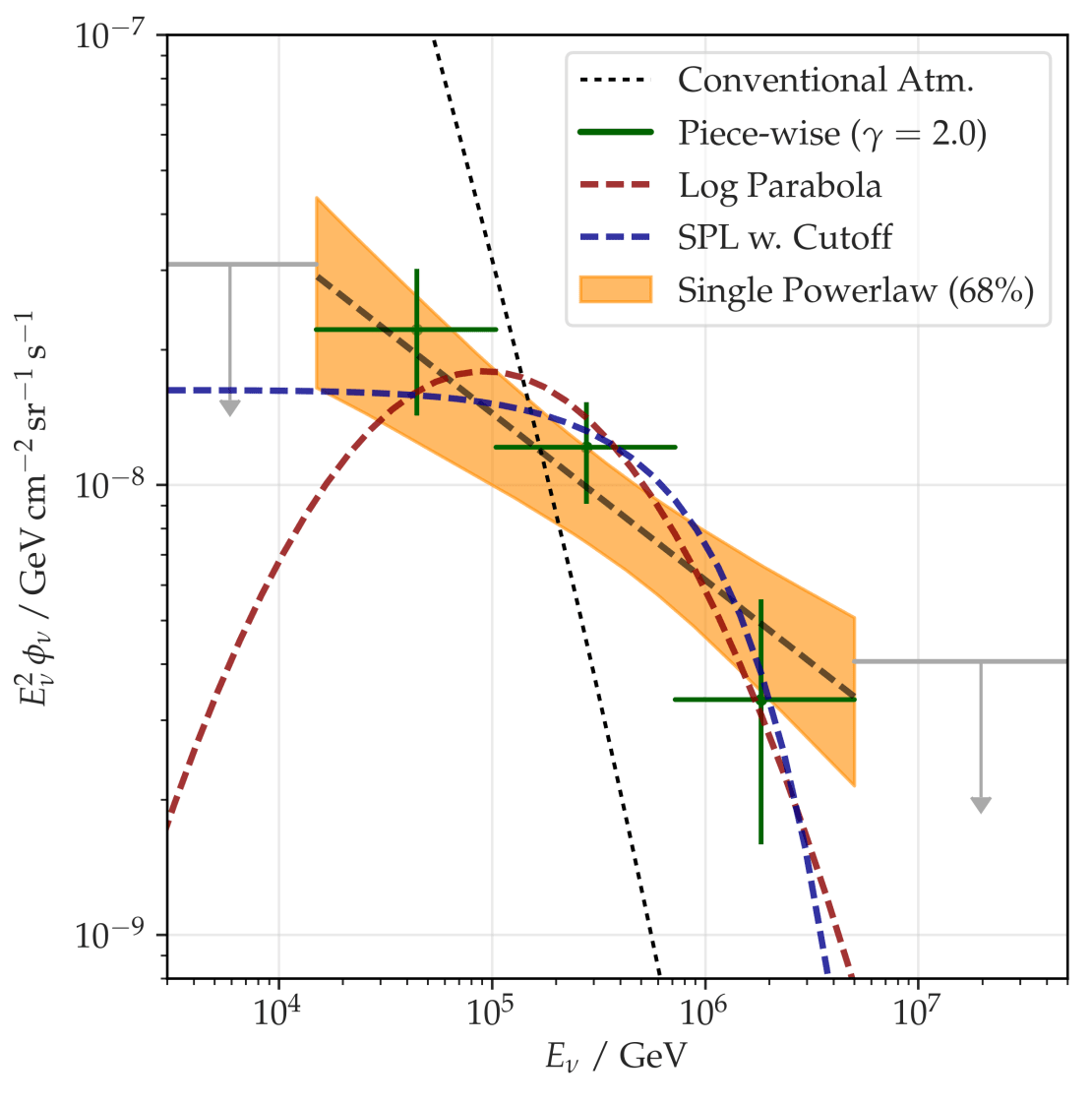Neutrino astronomy had a pivotal moment in 2013 when the IceCube Collaboration announced that their South Pole neutrino telescope had detected the first evidence of an astrophysical neutrino flux. This was confirmed in 2015 with an independent search in the Northern Hemisphere, also by IceCube. Since then, IceCube and other experiments have learned more about the diffuse neutrino flux, including uncovering hints about the elusive particles’ possible cosmic origins
But the dominant sources of the astrophysical neutrino flux are still mysterious to researchers. There are a few promising ideas that they are pursuing, such as gamma-ray bursts, active galactic nuclei, tidal disruption events, and starburst galaxies. The energy spectrum of astrophysical neutrinos can often be modeled by a simple power law. However, not all models predict a simple power law but rather exhibit a complex superposition of different shapes for different potential sources. If researchers find that the energy spectra of astrophysical neutrinos is better described by something other than a power law, it would be a hint to which potential sources might contribute to it significantly.
In a paper recently submitted to The Astrophysical Journal, the IceCube Collaboration presents a substantially improved measurement of the diffuse flux of astrophysical muon neutrinos from the northern sky that used 9.5 years of IceCube data. This work, an update of a 2016 IceCube analysis, adds three and a half years of additional data and roughly doubles the number of analyzed neutrinos to almost 700,000. It also reprocesses the full data set with the latest calibration and filtering standards, improves on the background estimation, and updates the treatment of systematic uncertainties, all of which allow for testing more complex models of the energy spectrum.

Measuring the total observed flux strength and energy spectrum of high-energy astrophysical neutrinos will help IceCube achieve a better understanding of the observed cosmic neutrino signal. This is important for untangling different possible processes behind the acceleration of high-energy cosmic rays and the production of neutrinos in those sources and could also help in pinpointing neutrino sources.
For the current analysis, collaborators selected throughgoing muon tracks detected between May 20, 2009, and December 31, 2018, and reconstructed their energies and directions. They then compared these values to a simulation-based expectation and found those parameters that described the data best.
The resulting measurement finds that a simple power law is still compatible with observed neutrinos, confirming the 2016 finding. It also shows first signs of a modified spectral shape in describing the observed neutrino energies, indicated by some “spectral softening,” or drop-off, above energies of 1 PeV (though these findings were not statistically significant); as a result, theory models that describe such a spectral shape are moderately preferred. “For the first time, the statistics are sufficient for an energy-resolved spectral measurement, which supports our findings,” says Jöran Stettner, a PhD student at RWTH Aachen and a lead on the analysis.
“With recently improved reconstruction methods and continuously improving statistics, we can expect a further increase in measurement accuracy in the next few years,” Stettner adds. A further goal of the collaboration is combining the measured astrophysical fluxes from different detection channels into a single consistent analysis based on a global fit of the data. In the long term, the proposed IceCube-Gen2 detector will allow an unprecedented measurement accuracy for discriminating between different astrophysical models.
+ info “Improved Characterization of the Astrophysical Muon-Neutrino Flux with 9.5 Years of IceCube Data,” IceCube Collaboration: R. Abbasi et al., The Astrophysical Journal 928 (2022) 1, 50, iopscience.iop.org, arxiv.org/abs/2111.10299